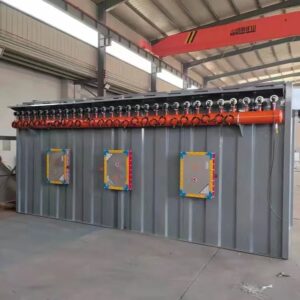During the use of the dust collector, many dusts are inflammable and explosive. In addition to improving the fireproof and explosion-proof measures in the workshop of the production enterprise, special treatment of the dust collector is also required to increase the explosion-proof capability of the dust collector. In order to ensure the normal operation of the dust collector and ensure the safety of production. It must be accepted that dust containing a large amount of carbon monoxide and hydrogen is flammable and explosive. Apart from these, most of the dust generated by all combustible materials is flammable and explosive dust, such as flour, coal powder, wood chips, cotton staple fibers, etc., and even Individual metal powders are also prone to explosion under certain conditions, such as aluminum powders. In the dust removal process of these flammable and explosive dusts, the reliable airtightness of the dust removal equipment must be achieved to prevent air inhalation or gas leakage, so as to ensure the safe operation of the system in a stable environment.
In addition, the design of the dust collector itself should also follow certain principles to achieve its own explosion-proof. The main safety measures are as follows:
一,Safety and explosion-proof measures for dust collectors
- Structural aspects of the dust collector: The bag filter used to treat combustible gas is usually designed in a round shape to increase the smoothness of dust flow and avoid excessive dust accumulation.
- The dust collector adopts fire-proof and explosion-proof dust bag, and a pressure relief device is added.
- The dust collector should ensure continuous dust removal and avoid dust deposition.
二,Dust removal equipment pipeline safety valve
- The flue gas pipeline should try to avoid dead corners, ensure the pipeline is smooth and increase the airflow speed to prevent gas stagnation.
- A safety valve is set on the front pipeline of the fan so that the pressure can be released urgently in case of gas explosion. The upper safety valve is often set at the top of the flue. During normal production, the gland is buckled down, and it is kept sealed with a water seal, and the height of the water seal is 250mm. In case of intense combustion in the flue, the pressure is greater than the weight of the gland, that is, the gland is urgently punched to release the pressure. The lower safety valve is located at the front of the machine. During normal production, the gland closes the pressure relief hole under the action of the heavy hammer, and the pressure relief hole is welded with a thin copper plate. In the event of an explosion, when the gas breaks through the copper plate, we need to open the gland to release the pressure.
